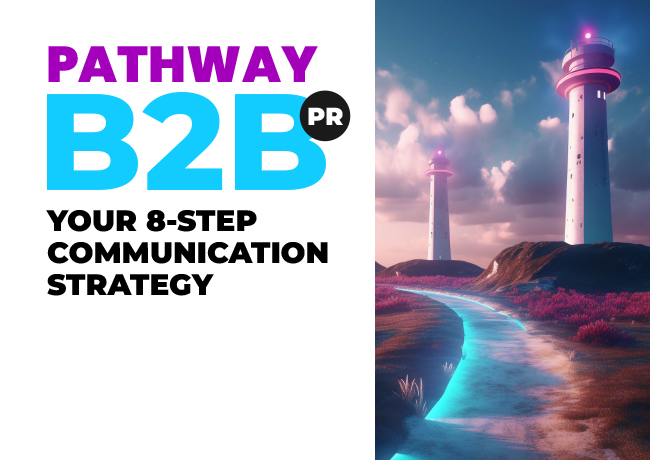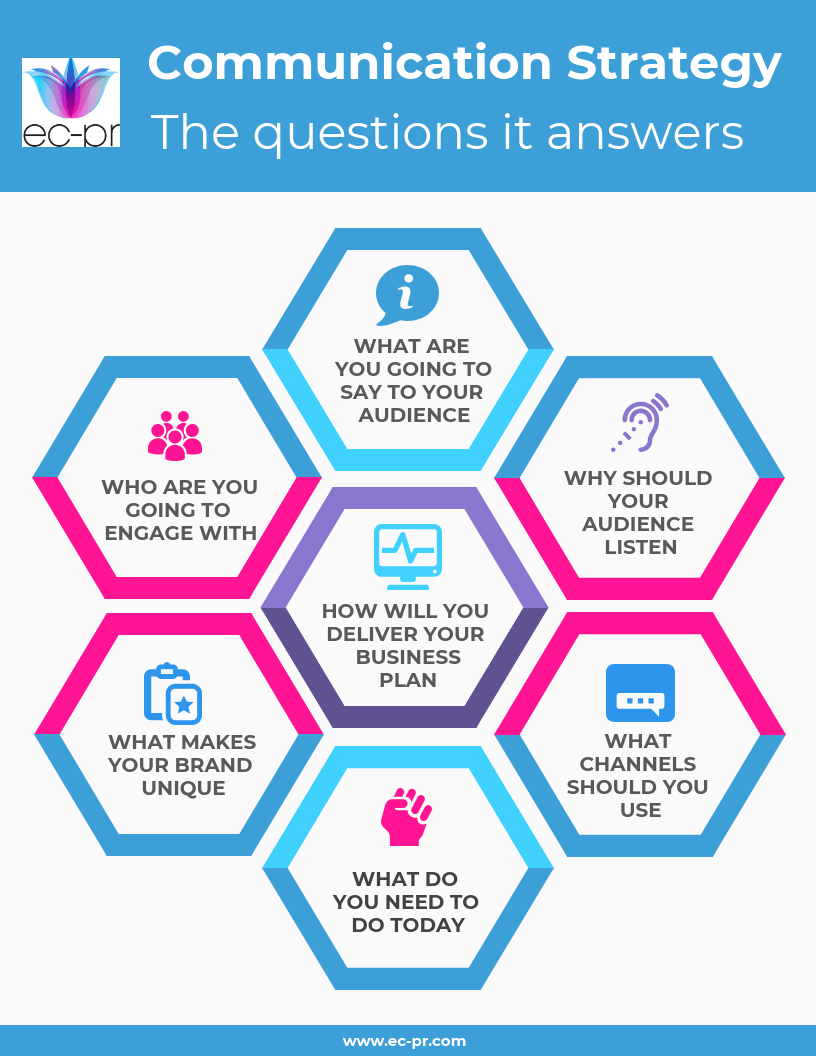
What makes a good communication strategy?
In essence, a good comms strategy will save you time and money whilst accelerating brand awareness and driving engagement to support lead generation and new business. The keyword being ‘good’; but what makes a good comms strategy? What elements should your strategy contain to ensure it is successful?
Read on to find out.
A good communication strategy delivers clarity
When done well, a communication strategy delivers clarity on who you are as an organisation, what you’re going to say, who you’re going to say it to, when you’re going to say it, and importantly, why you’re going to say it. It creates the opportunity for organisations to marry their vision and their ‘why’ with the challenges their customers face. This then ensures that, to their customers, they are always seen as relevant, trustworthy experts who understand the market and can solve these problems for them.
It will deliver a cohesive vision
A good communication strategy will also deliver a cohesive vision to your team and business leaders by providing a clear understanding of your business’ identity, and a thorough plan as to how, when, and why you’re going to communicate. In 13 questions executives can use to assess their own communications plans, Mason Burchette from Best Buy Metals emphasises this, saying:
“Based on your current communications plan, what do people think you do and who do they think you are? If you can’t objectively answer these questions by looking at your communications plan, then you should refine the plan until you’re able to.”
It’s important to keep in mind that a communication strategy is ultimately there to help deliver your business strategy. It should be formulated based on the objectives of the business and should evolve as the needs of the business continue to develop. Highlighting this, Niki Hall, Contentsquare, said:
“To stay on course and ensure that the energy put in will add value, executives and their teams need to continually do gut-checks to confirm that communication activities support a big-picture goal, narrative or mission.”
– Niki Hall
A good communication strategy is practical
We have our own set of questions you should ask when assessing your communication strategy:
What are you going to say to your audience?
Why should your audience listen?
What channels should you use?
What do you need to do today?
What makes your brand unique?
Who are you going to engage with?
How will you deliver your business plan?
“If you had told me, at the start of this journey, that a business like ours, operating in our space, could have a USP, I would never have believed you. I would not have thought it was possible. But we do and we have, we stand out for all the right reasons. That’s remarkable.”
– Dave Kelly, managing director, 2i
Defining what made them unique was one of the key reasons our client 2i found success with their communication strategy. Finding their voice and their USP enabled them to win new business, find consistency in how they communicate, and much more.
The strategy should address five essential elements
To implement a good communication strategy, you need to ensure you cover some key areas. Each of these elements informs each other and are of equal importance so you must cover each part when writing your strategy:
1 Value proposition
Your value proposition should make clear why customers should buy from you and not your competitors. What are the benefits of buying from you, why are you here and why should your customers care?
2 Sector priorities
Establishing sector priorities enables you to identify commonalities in your target audience – areas that overlap can be brought together saving you money and resources.
3 Target personas
Bring your ideal customer to life by creating target personas – a great way to visualise who you’re selling to, understand their needs and pain points, and why they would be interested in engaging with you.
4 Positioning statements
Following on from target personas you should develop positioning statements for each ideal customer. This should be a message that defines what you are offering and how you’re different, but it needs to be communicated in a way that specifically appeals to each persona.
5 Messaging development
The final critical element of your communication strategy should be messaging development. Brand messages should be crafted for each stage of the buying cycle – awareness, interest, preference, and action.
A good communication strategy is clear, actionable, and inspiring.
To start forming your communication strategy, reach out to our specialists today. And if you found this article valuable, read our complete guide to writing a communication strategy or download the 8-step communication strategy guide here.
Or, if you’d just like to stay in touch – sign up here to receive regular insights on how to make your PR work harder.

DOWNLOAD: Your 8-Step Communication Strategy
A complete guide to delivering your business plan

Your 8-Step Communication Strategy Guide
A comprehensive guide to delivering your business goals using intelligent and relevant messaging.

a communicaton strategy helps deliver your business plan
You need a blueprint for how sales and marketing are going to grow your business.
Subscribe to our updates
Stay up to date with the latest insights, case studies and PR guides.



